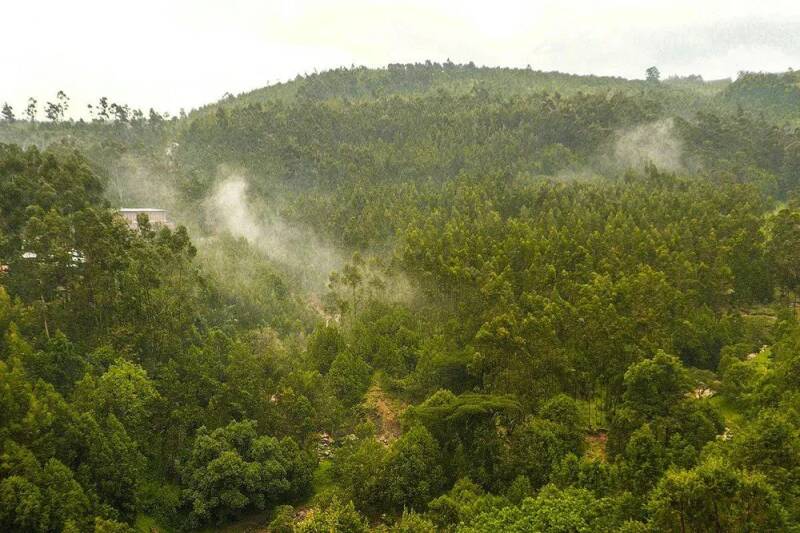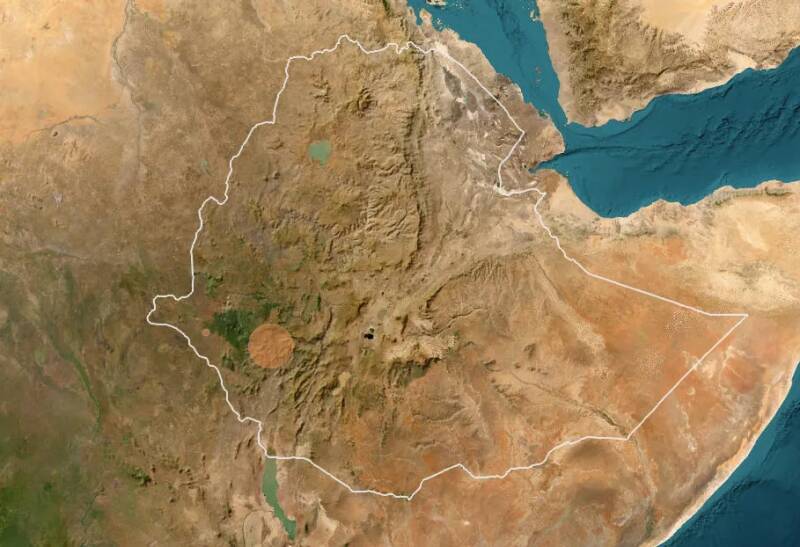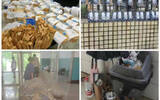Where is the hometown of Arabica species? How does the coffee taste in Ethiopia's Kafa Forest taste? How to rush native species?
We often hear the saying that Ethiopia is the hometown of Arabica coffee. In fact, it should be the Kaffa Zone region of Ethiopia where coffee was first found. To this day, countless wild Arabica coffee mother trees still grow in the cloudy forest and are protected.

Looking through the materials in the front street, we learned that the word "Kaffa" is translated from the English "Kafa", and in some places it is also written as "Kafa". It comes from the name of an ancient kingdom in history, which was called the Kingdom of Kaffa at that time.

Later in Kaffa Zone, southwest of Ethiopia, the tribe was annexed by the Ethiopian Empire in 1897 and became part of what is now the southern state, hence the name of the Kafa region. Administratively, the Kafa region belongs to the people's State in the southwest of Ethiopia (South West Ethiopia Peoples' Region), which is located in the north of the Autonomous Prefecture.
Ethiopia's climate is extremely polarized, half in the humid rainforest and half in the arid desert Gobi. When we look down from above, we can see that the western part of the country is the greenest, and a large part of these lush green belts belong to the Kafa Biosphere Reserve (Kafa Biosphere Reserve), which is located at the junction of Gambela, Oromia and SNNPR.
The billboard leading to the Coffee Mother Tree Forest in the Kafa region is the largest area of forest in Ethiopia. The primitive forest of the Kafa biosphere is recognized as the birthplace of coffee in the world, and it is also the genetic treasure house of Arabica coffee that we are familiar with today. "Gesha" in the story of the origin of Rose Summer is one of the areas of Kaffa, located in the west.
According to the German Union for Conservation of Nature, the Kafa Biosphere Reserve covers an area of about 760144 hectares, of which the forest area is 422260 hectares and the coverage is 55.6%. Over the centuries of natural evolution, the Kafa Forest has given birth to about 5000 coffee species, which is considered to be the richest genetic treasure trove in Arabica today, so it is also known as the "Museum of Natural Coffee varieties".
It is not very different from the cloud rain forest we remember, with scattered mountains, lush vegetation, moist air and mud, and rich species in different shapes. The difference is that a large number of ancient coffee trees make up an important part of the ecosystem here. Coffee grows under dense, tall shade trees. There are no artificially cultivated crops here, only wild plants that germinate naturally and fall with seeds.
However, as people uncontrolled reclamation, and continue to cut down plants, turning a large area of wild forest into available arable land, this forest also faces an unprecedented threat. According to statistics from the Food and Agriculture Organization of the United Nations (FAO), the rate of vegetation exploitation in the Kafa forest reached 11000 hectares per year from 1988 to 2008, which means that if no measures are taken to stop it, the original forest will disappear completely in the next 10 to 20 years.
The pristine forest of Kafa has been listed as an international biosphere conservation area by the United Nations NABU since 2010, and a project to protect the birthplace of wild Arabica coffee has been launched to protect the last natural coffee forest from destruction. At present, about 30 coffee producers' cooperatives have been set up around the Kafa Nature Reserve to harvest red fruits ripe from the primitive forest.
Different from the pastoral pattern of farmers planting coffee trees in their own backyard, Kafa Yunwu forest is the most representative to produce wild coffee. Coffee trees all grow in the shade of 1400-2100 meters above sea level. Favorable factors such as original ecology, microclimate, laterite soil and abundant rainfall provide a good growing environment for coffee trees.
In order to taste this kind of "wild coffee", Qianjie also acquired a batch of Kafa forest coffee beans washed in water, and adopted a medium-shallow roasting degree to highlight its distinct flower aroma and fruit charm.
Qianjie Coffee: Essekafa Forest Coffee Bean country: Ethiopia producing area: Kafa primeval forest altitude: 1800 m varieties: original seed treatment method: washing grade: G1 flavor: bergamot, white flower fragrance, orange, apricot
24 hours after the coffee bean was roasted, the front street immediately tested it. The dry aroma of this washed Kafa Forest shows elegant aromas of white flowers, lemon and citrus peel like oranges, with aromas of ripe apricots and sweet oranges when injected with hot water.
At the entrance of the coffee, the front street first felt the bright and clean acidity of fruit, with rich aromas of lemon, orange, nectarine, green tea and caramel. as the temperature dropped slightly, the coffee tended to have a juicy feel of apricot and green, with a light overall texture and after swallowing, there are still some sweet aromas of melons and nuts in the mouth, which are very comfortable.
-END-
Important Notice :
前街咖啡 FrontStreet Coffee has moved to new addredd:
FrontStreet Coffee Address: 315,Donghua East Road,GuangZhou
Tel:020 38364473
- Prev

How to choose a latte pot? What is the difference between a milk vat with a sharp mouth and a round mouth? How to make embossed tulips?
I don't know if you have ever had this feeling when practicing drawing flowers: no matter how you practice, you will always feel that you are being blocked by an inexplicable way when drawing pictures, making it impossible for you to draw the imaginary drawing flowers well. pattern. If it's not a technical problem, then it's very likely that it's the flower jar you use
- Next

The ice is out! College students closed Ruixing's store!!
▲ Click to pay attention| Daily Boutique Coffee Culture Magazine Coffee Workshop At the end of June, most of the final examinations in major colleges and universities are the time for final examinations in major colleges and universities. In order to fight the midnight oil for college students who can get good grades, the most important thing is refreshing coffee. Therefore, every exam week, the school's coffee shop has become an "energy station" for students
Related
- What effect does Italian American coffee with filter paper have? Will coffee taste better if it is put on filter paper at the bottom of the powder bowl?
- What is the color difference in coffee beans? What are the characteristics of honey processed coffee beans? Why are the anaerobically treated coffee beans uneven in color?
- How does novice Xiaobai quickly get started and make coffee? Newbies learn to make coffee by hand and share the specific steps and process process!
- Costa tea has a shelf life of 100 years?! Expert: Unable to verify
- It's a huge uproar! American milk addition was rejected by Manner employees?!
- Mocha pot coffee bean recommendations| How fine and how much powder should be used for grinding? What parameter ratios do I need to use to make milk with Mocha pot coffee?
- What are the characteristics of the world's top ten coffee beans treated with Costa Rica honey? How to make black honey kadura from Tarazhu Pilon Processing Plant taste good?
- How to make deep-roasted coffee? What grinding water temperature does authentic Jamaica Blue Mountain No. 1 coffee use to brew it well?
- Selected high-grade rose summer coffee flavor tasting guide Why Panama rose summer has the aroma of flowers and fruits
- What equipment does a novice Xiaobai need to buy to learn to make coffee? Filter cup electronic scale bean grinder manual flushing pot purchase guide

